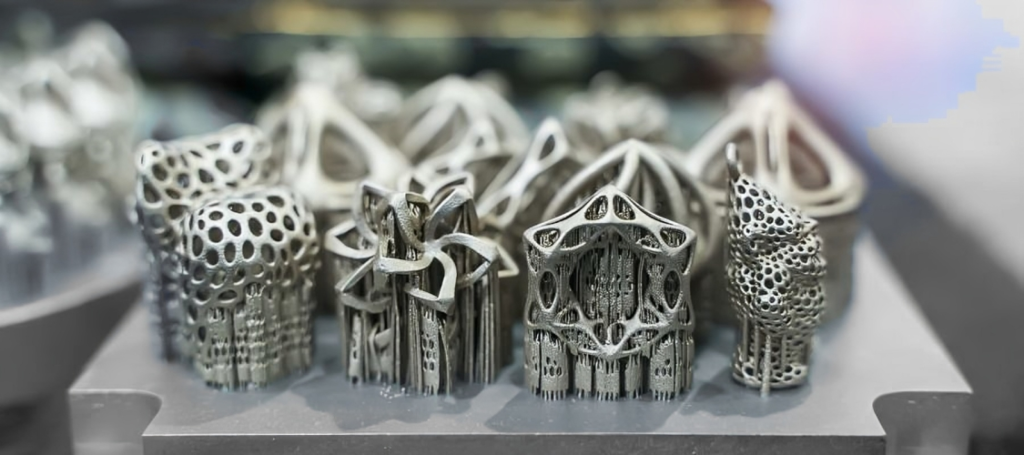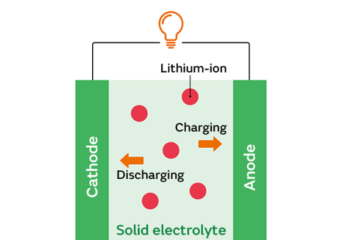Electron Beam Melting: Revolutionizing Metal Additive Manufacturing

In the ever-evolving landscape of additive manufacturing, Electron Beam Melting (EBM) stands as a technological marvel, reshaping the way we approach metal 3D printing. This advanced technique, marrying precision and innovation, has garnered significant attention for its unique process and the remarkable results it yields. Let’s dive deep and learn how this technology is revolutionizing metal additive manufacturing.
Working Mechanism of EBM
Powder Bed Preparation: The process begins with a thin layer of metal powder spread evenly across the build platform. This metal powder serves as the raw material for the 3D printing process.
Electron Beam Control: EBM operates within a vacuum environment. A high-powered electron beam generated by an electron gun is precisely controlled and directed to specific points on the powder bed.

Selective Melting: The controlled electron beam selectively scans and melts the metal powder at predetermined locations according to the digital design. The intense heat the electron beam generates causes the metal particles to fuse together.
Layer-by-Layer Buildup: After the first layer is melted, the build platform is lowered, and a new layer of metal powder is evenly spread over the previous one. The process is repeated as the electron beam scans and selectively melts each layer, fusing it with the layers beneath.
Solidification and Cooling: As the electron beam moves, melting and fusing the metal powder, the material undergoes rapid solidification and cools almost instantly. This quick solidification contributes to forming a solid, three-dimensional object with minimal heat-affected zones.
Build Completion: The layer-by-layer process continues until the entire 3D object is formed. Once the final layer is melted and solidified, the completed object is left within the powder bed.
Powder Removal and Post-Processing: The excess, unmelted metal powder acts as a support structure after the build process. The finished object is carefully removed from the powder bed, and any remaining powder is typically recycled for future use. Post-processing steps may be required to improve surface finish or achieve specific material properties.
Material Flexibility in EBM
What sets EBM apart is its adaptability to various metals. Whether it’s titanium, stainless steel, or nickel alloys, this method accommodates a range of materials, making it a go-to for industries like aerospace and healthcare where specific material properties are critical.
Advantages of EBM
- Material Versatility: EBM accommodates a range of metals, from titanium to stainless steel, making it suitable for diverse industrial applications.
- Precision Printing: The controlled electron beam ensures pinpoint accuracy in metal layer deposition, resulting in components with superior mechanical properties.
- Reduced Material Waste: EBM’s direct creation of functional components from digital designs minimizes material waste, aligning with sustainable manufacturing practices.
Challenges and Disadvantages of EBM
- High Initial Costs: The technology behind EBM involves complex machinery, leading to high initial setup costs for manufacturers.
- Post-Processing Challenges: Despite its precision, EBM often requires post-processing steps for surface finish improvement, impacting the overall production timeline.
- Limited Resolution: EBM may face challenges in achieving fine resolutions compared to some other additive manufacturing methods.
Electron Beam Melting (EBM) vs. Selective Laser Melting (SLM)
| Property | Electron Beam Melting (EBM) | Selective Laser Melting (SLM) |
| Energy Source | Electron beam | Laser |
| Environment | Operates in a vacuum | Often requires inert gas atmospheres |
| Material Versatility | Accommodates a range of metals | Suitable for various metal powders |
| Material Absorption | Electron beams penetrate deeper into materials | Laser absorption affected by material reflectivity |
| Build Speed | In some cases, faster build speed | Build speed influenced by laser power and scanning strategy |
| Initial Setup Costs | High due to complex machinery | High initial costs for laser systems and inert gas systems |
| Post-Processing Needs | May require post-processing for surface finish | Post-processing often needed for surface finish |
| Resolution | May have limitations in achieving fine resolutions | Generally capable of achieving fine resolutions |
Applications and Future Outlook
EBM finds applications across industries, from aerospace with its lightweight yet robust components to healthcare, producing customized medical implants. As technology advances, EBM is set to explore new possibilities, pushing the boundaries of metal additive manufacturing.
Conclusion
Electron Beam Melting is a straightforward yet powerful force in metal 3D printing. Its precision, material versatility, and ability to overcome traditional constraints position it as a no-nonsense player in the future of manufacturing. As industries navigate the additive manufacturing landscape, EBM beckons as a technical powerhouse, reshaping possibilities in metal 3D printing.



0 Comments